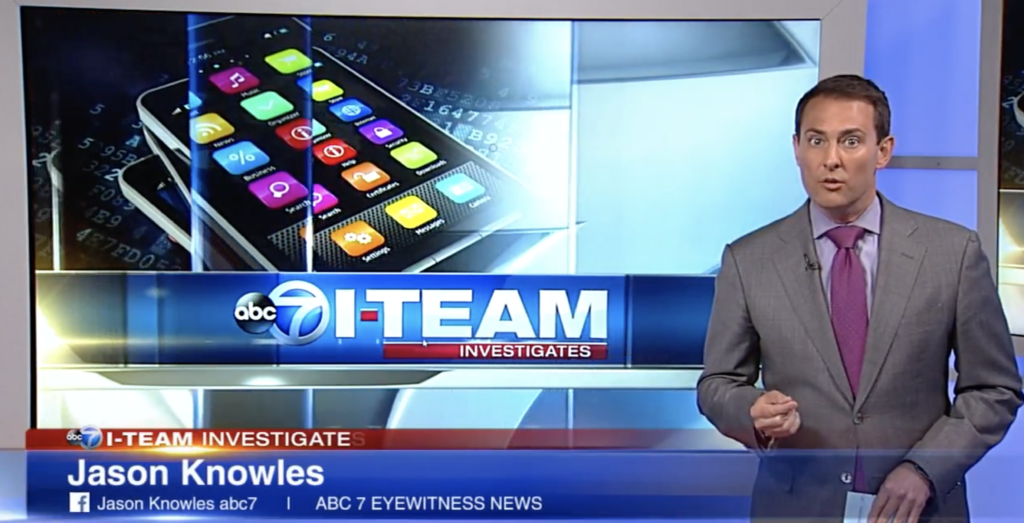TV News Reports “New” Mobile RDC Check Fraud Scam

Turns out the latest in fraud techniques is creating fake checks from mobile “photo deposit” apps. An ABC7 I-Team investigation uncovered ways in which that technology can be used to rip off people and businesses.
Employee checks from Superdawg Drive-in, a restaurant on Chicago’s northwest side, were replicated by fraudsters and used to pay for goods and services. They were most likely recreated from a mobile deposit screenshot of legitimate checks, as reported by ABC7.
“They white-out the payee, and change that,” (Governors State University Professor Bill) Kresse said. “They white-out the amount and put some large amount, but they don’t white-out the account numbers at the bottom of the check, so eventually those funds will be withdrawn from that person’s (or business) checking account.
“They may use artificial intelligence to take a part to determine the scam checks from real checks. Many apps, they’re not doing that now and so the bad guys are getting away with this fraud.”
The ability of fraudsters to create an image of a check is not necessarily a new technique. What is newsworthy is accessibility. Pretty much every fraudster has a smart phone with the ability to to either sign up for mobile RDC or take a picture of a check. Once you get the image, then some form of editing can take place.
This is a somewhat unique case, because instead of just depositing the check into their account using an RDC deposit, the fraudster evidently printed the check or delivered it electronically to the merchant, who received it as payment for the goods and services.
Fortunately for Superdawg, they did not incur any losses on the transaction. But who did? The bank of first deposit (BoFD), or the paying bank?
Things get complicated behind the scenes. Let’s assume the fraudulent item was deposited at the BoFD and cleared at the paying bank and not identified until Superdawg notified the paying bank. The paying bank probably takes the loss. But if it’s an alteration, according to this BankersOnline post: “the paying bank can enter a warranty claim (without entry) directly against the depositary bank for breach of the depositary bank’s presentment warranty under UCC 4-207 that the check wasn’t altered.”
If it’s an alteration, it is probably less ambiguous — but is it really a counterfeit item? Well, that’s where the 2018 Reg CC changes on presumption of alteration may come into play. As documented on the Federal Registrar, “this rule adopts a presumption of alteration for disputes between banks over whether a substitute check or electronic check contains an alteration…”. But, there are UCC rules to consider, state laws, and the timing of any claim between banks.
Check out this great article by Severson & Werson illustrating the many complications in identifying who is “at fault”, particularly when large dollar items are in question. The article has many great suggestions on how depository institutions can defend warranty claims by rebutting the evidentiary presumption of alteration.
The moral of the story is that there are more scenarios and complications with check fraud than ever before. Today’s image & transaction technologies can stop the majority of fraud items like this. Use case examples are summarized below:
- Amount verification can identify whether the amount of the deposit is different from the courtesy or legal amount
- Amount discrepancy for alteration detection can identify whether the courtesy and legal amounts are different
- Check style analysis can compare the font of the amount on a business check to previously cleared checks
- Payee validation can identify checks not made out to the account holder, supporting counterfeit detection
- Payee verification can identify checks not matching the issue file name, supporting alteration detection
- Automated signature verification can match signatures to previously cleared checks, thus identifying potential forgery items
Even if one cannot detect a fraudulent item before the loss occurs, having an advanced self-learning solution — which flags various forms of alterations, forgeries, and counterfeits — better facilitates the warranty and claim process between banks. It might make the difference in a $300,000 presentment claim!
This blog contains forward-looking statements. For more information, click here.